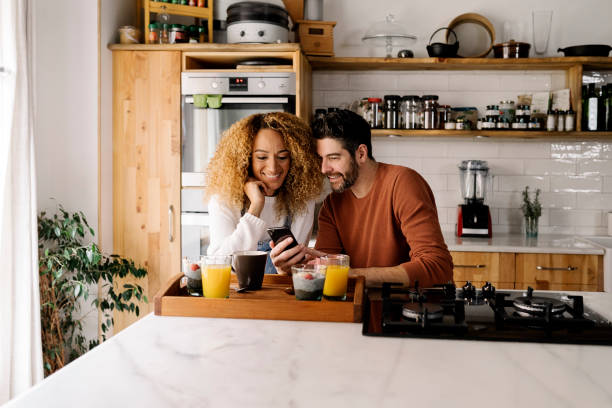
Anxiety can be an overwhelming and debilitating condition that affects many people’s lives. In our Woodland Hills office, while using CBT and mindfulness approaches has been very effective in helping our clients manage their anxious thinking, we also know that another powerful and therapeutic approach is engaging in art and creative expression, especially with teens, neurodiverse individuals, and/or creative minds.
Therapy for anxiety comes in many formats, and a therapist for anxiety will do their best to offer as well-rounded an experience as possible. Each person responds differently to the various therapies provided by a given practice. Responses can even vary within a person’s lifetime, as there may be major life events such as relationship commitments or endings or grief that a person endures, or even more acute struggles, like worrying about the onset of summer and the social norms that come with it. Whether your anxiety is short-lived and infrequent, persistent, mildly annoying, or fully invasive, it is important to find a system of treatments and supports that works for you.
This includes utilizing artistic expression to cope with your struggles and fostering more overall wellness and peace of mind. Whether through painting, drawing, writing, or any other artistic medium, art and creative expression offer a powerful avenue for managing anxiety and promoting mental well-being.
The Therapeutic Benefits of Art and Creative Hobbies in Managing Anxiety Symptoms
Find solace and/or release a sense of control. Anxiety creates a need to control as many outcomes as possible and won’t let go until that sense of power has been created or restored. It is good practice to release that sense and

become comfortable without it.
- Tap into their inner creativity, reclaim alone time, and refocus.
- Experience moments of peace and mindfulness. Creating art often requires individuals to be fully present in the moment, fostering a state of mindfulness. When engrossed in the creative process, the mind becomes focused on the task at hand, redirecting attention away from anxious thoughts and worries.
- Express emotions that feel too overwhelming to put into words: individuals can externalize their internal struggles, giving a tangible form to their anxieties.
- Through visual art, one can point out how anxiety is showing up in their body.
- Art can help rate the intensity of emotions.
- Art can help tell the story of how their anxiety had initially developed and/or shows up today.
- A consistent practice of any activity is great for building self-esteem and confidence.
- Emotional Release and Stress Reduction. Engaging in creative activities has been shown to activate the release of endorphins, dopamine, and serotonin in the brain—neurochemicals that promote feelings of pleasure, relaxation, and happiness. By channeling anxiety into art, individuals can experience a cathartic release of pent-up emotions, leading to a sense of relief and improved emotional well-being.
3 Ways to Use Art and Creative Expression in Managing Anxiety
1) Ask open-ended questions:
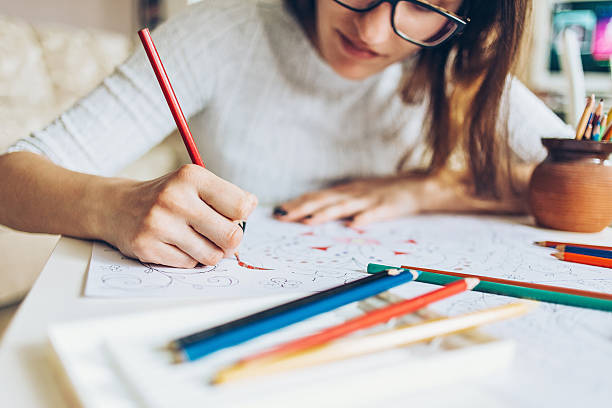
The process of utilizing art to explore, understand, and express ourselves requires us to be willing to be truthful. Sometimes, we get in a mindset of determining what the outcome “should” be. We want to know how something will end before we feel comfortable beginning. The creative process isn’t truly creative if we do not allow our instincts and discoveries to lead us organically. Using art is the way we express ourselves without judgment and without trying to control every moment of the journey. Open-ended questions can further enhance this process by encouraging exploration and a deeper understanding of your emotions and thoughts.
When you begin using artwork therapeutically, your instinct might be to ask questions that offer a limited number of potential responses, namely “yes or no” questions. “Do I feel better?” or “Have I gotten what I wanted to get out of this process?” If you are being particularly hard on yourself, you might wonder, “Is this even any good? Am I improving my skills? Will anyone like this?” Depending on your state of mind, you could easily say, “No, no, and no” and feel defeated.
Open-ended questions foster curiosity about what you are doing in a way that clarifies the benefits. Ask yourself, “What emotions arise as I begin creating my artwork?” This is a neutral question that can give you insight into what you are feeling. It doesn’t try to steer you one way or the other; it leaves space for any and every possible answer. Remember that there is no wrong answer. If negative emotions are rising, you may notice that. The same goes for positive. You may even be uncertain or feel a combination of emotions that lead to you feeling more neutral than anything.
Another important question to consider: How does the process of creating art help you cope with anxiety? Again, this question assumes that your process helps you because it does. It’s not asking you to focus on outcomes. It’s asking you to keep your mind on what is working. When we identify, acknowledge, and put effort into what works for us, we are better able to continue to lean into those habits, thoughts, and actions. At first, you might not know how the process is helping you. The open-ended question may have a straightforward response: “I don’t know; it just does.” As time goes on, you may begin to recognize patterns and articulate what you are seeing. “It helps me to have an outlet for emotions so deep I don’t feel that words do them justice.” You might realize, “I practice letting go of my need to control and instead focus on my process in real time. I am more mindful.”
Some other open-ended questions you can consider: “Why do I feel the need to create right now?”; “What am I learning about myself through this process?”; “What emotional changes do I experience as I am exploring my creativity?”; “How does my body feel as I explore my creativity?” If you find yourself reverting to more closed questioning, give yourself permission to consider and explore why that is. You might want to talk to a loved one or mental health professional about it for some support and guidance.
2) Use drawings or collages:
Drawing and making collages provide a creative outlet for expressing your thoughts, emotions, and experiences. They allow you to visually communicate and externalize your anxiety, which can be cathartic and provide a sense of relief. You can do this on your own or with someone you love and trust! As long as you feel safe being honest, you can choose how this process looks for you.
As an anxiety therapist in Woodland Hills, I see many patients who know they feel uncomfortable, uneasy, sad, or angry but have difficulty communicating their ideas with words. For some, it’s a matter of speaking the emotions
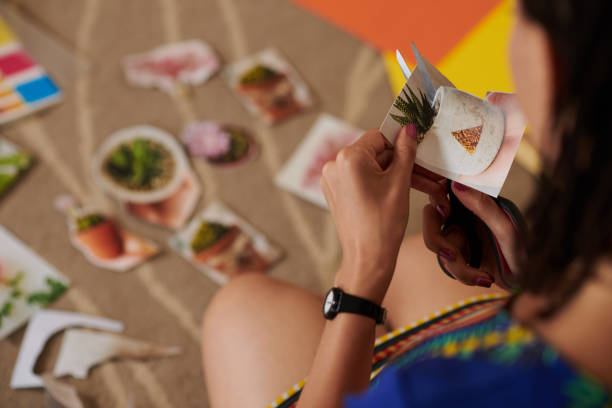
aloud; trying to do so can feel very vulnerable. Some people literally feel like their throats are closing around their attempts to express themselves. For these people, writing may be the answer. Putting pen to paper (or fingers to a keyboard) and just letting the thoughts move through your body and come out on a page can be very liberating!
But sometimes, the words feel inadequate in some way. A word can be almost what you’re looking for, but not quite enough. When we utilize tools with parameters, we sometimes feel limited by them. A word has an official definition; a painting does not.
If you are a visual person, you may find that a picture in a magazine makes you feel a way that words could not do justice. If it’s a vision for a goal you have or a representation of something that is plaguing you, you may feel seen and validated by your ability to use it as a means of communication. In this way, collage art can be really helpful. It can be utilized as a goal project, where you assemble what you want to work on and how you want to feel. It can be created as a representation of what you have been going through and then destroyed or put away somehow. Always remember that anything you create can be saved or tossed depending on what you’d like to do. You are not aiming to create the perfect artifact that will be studied for years to come. You are using a tool to assist with your emotions.
Drawing, painting, sculpting, or any other medium in which you are using your body to create the image can unlock your subconscious and help you process the issues in your nervous system. In a lot of ways, because our bodies store unconscious information, using them to communicate tells us more than written language can. We see this in body language all the time: if someone tells you they love you but look unhappy, you are going to pay more attention to their body language and facial expression than their words. Physical exploration can help us to unlock and work through unconscious or subconscious information.
You do not have to develop a high “skill level” to use visual art to communicate. You may find that you improve certain techniques over time or find the path to expression more easily. But that is not the point. The point is not to perfect something and judge it. The point is to use art as a medium for self-care.
3) Create a worry jar:
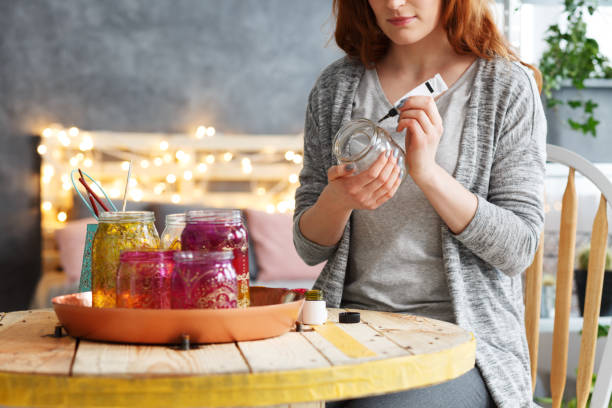
Decorate a jar and write down your worries or anxious thoughts on small pieces of paper. Put them in the jar, symbolizing your intention to let go of those worries. This visual representation can assist in reducing the weight of your anxiety. You envision that the worry is going away and then literally put it away somewhere. You can make the jar be whatever you want it to be.
Perhaps you want the outside to look like a safe so your worries can be “locked away.” Maybe you want to cover it with photos of your loved ones. Decorating the jar can be a project you work on with a friend and/or family member; maybe they feel the need for a worry jar, also! Taking something that will be a tool you use for self-care and putting time, effort, and love into it is a great way to train yourself to put time, effort, and love into yourself. What does it mean to make your worry jar something that represents you? How does it feel to look at it and see it as beautiful? Or, if you make it look what you consider to be ugly, how does that help you?
What comes to mind when you consider making your worry jar into something that sparks joy in you? When you think about creating a happy place in which to deal with your unhappiness, does that resonate with you? How would you feel about worrying if you could move your worries somewhere you weren’t afraid of? The jar can be that safe place for you if you so choose.
Consider how you will utilize your worry jar. Will you empty once per month and review what your worries were? If so, what will you do with the worries that no longer plague you? Put them in a different jar. Burn them? Recycle them? Or will you empty the jar without revisiting the past? You may elect to empty the jar only when it is full or every year on the first of January. As a Woodland Hills anxiety specialist, I often see that how people process and deal with anxiety plays a significant role in how their anxiety impacts them. In many cases, people with high anxiety who manage it well are no worse off than if their anxiety was low or moderate. Having a plan for your worry jar – a plan to use it, how you’ll use it, and how you will process what it means – should occur with the ultimate goal of alleviating your anxiety as much as possible. If there’s an idea about the jar that sounds good in theory but causes more stress, it won’t be beneficial. You have to be willing to be flexible and adjust what you thought it would look like.
Art and creative expression require honest acceptance of emotions. They operate in real-time and feel best when permitted to become whatever they become without trying to control every aspect. Anxiety creates the opposite
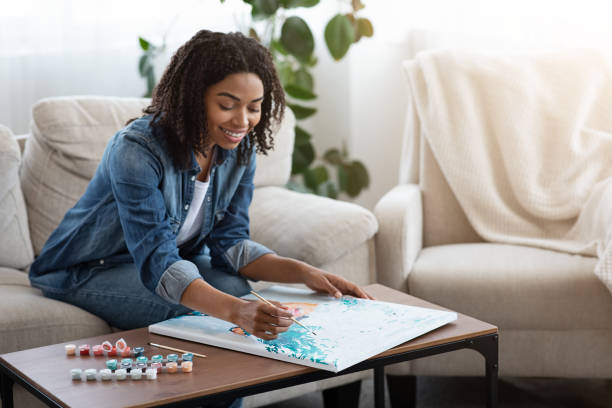
impulses: stress, a need to control, fear, rumination, and worry. Through art therapy, we practice being mindful and accepting of the process. These are the things we focus on when we at our practice see patients for anxiety counseling in Woodland Hills. Progress is not linear; sometimes, it doesn’t even look like progress, as ups and downs and setbacks occur. The progress is in the doing, continuing to explore, asking questions, and being open-minded.
Let’s Start Anxiety Therapy At Embracing You Therapy
If Anxiety, whether at work, in social settings, or dating, is getting in the way of you living your best life, then Anxiety Therapy with our CBT specialists in our Woodland Hills office here to start the journey of getting a handle on those worrisome thoughts, panic-like sensations in your body, and avoidant behaviors. We don’t just talk about the past but also explore the present challenges so you can create the future you want where you are confident, calm, and at peace.
Contact us today for your complimentary 20-minute phone consultation with our Client Care Coordinator.

